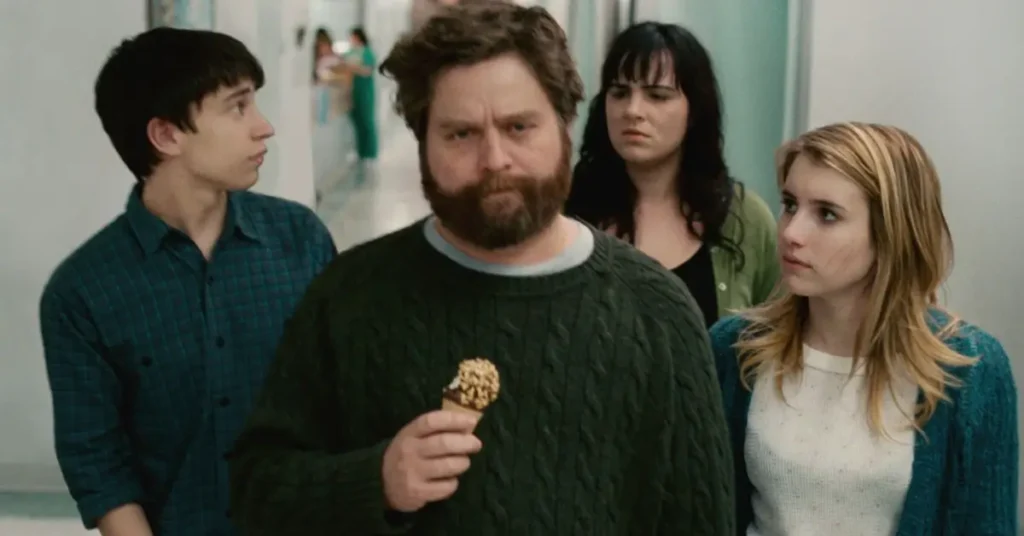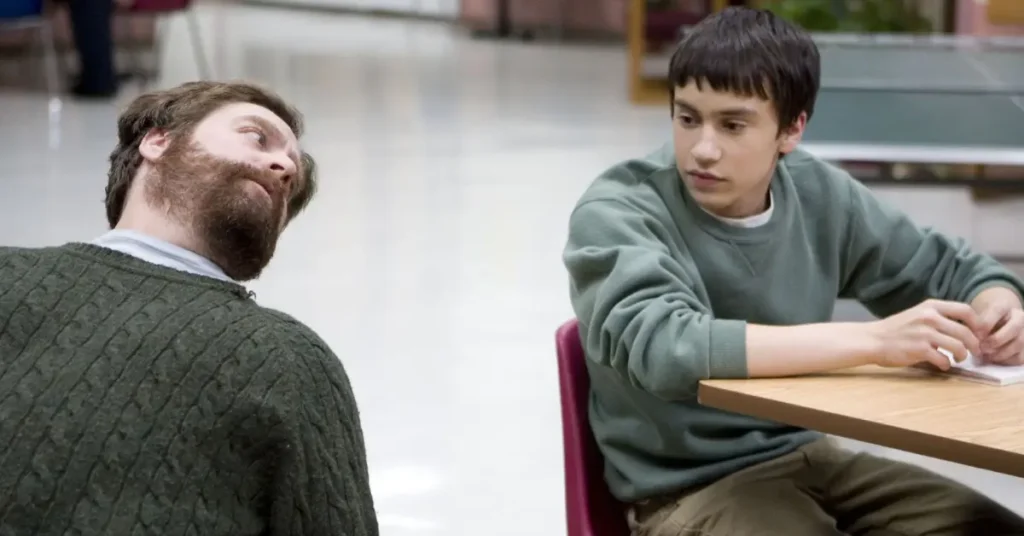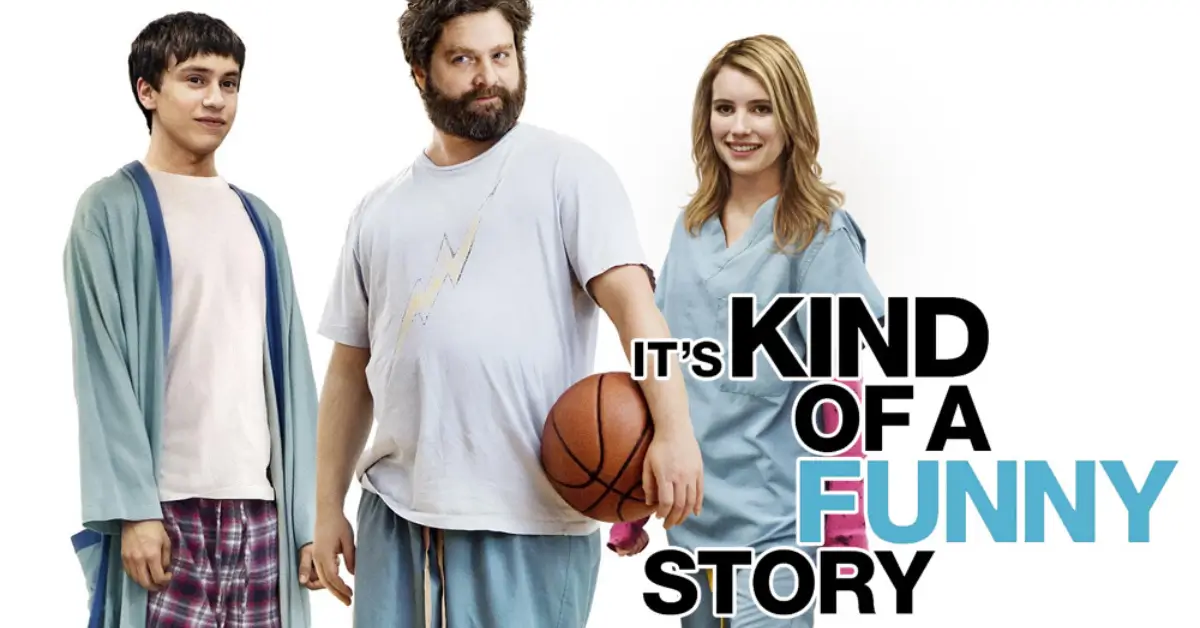It’s Kind of a Funny Story: A Compassionate Look at Teen Mental Health
In the evolving landscape of films addressing mental health, It’s Kind of a Funny Story occupies a unique position. Released in 2010, this coming-of-age dramedy offers viewers an accessible yet substantive exploration of adolescent depression, anxiety, and suicidal ideation through a lens that balances humor with heartfelt sincerity. When watching this adaptation of Ned Vizzini’s semi-autobiographical novel, audiences are invited into the world of psychiatric care with unexpected warmth and relatability, making complex mental health issues approachable without diminishing their seriousness.
Thank you for reading this post, don't forget to subscribe!Basic Film Information
Title: It’s Kind of a Funny Story
Release Date & Production Year: October 8, 2010
Directors: Anna Boden and Ryan Fleck (known for character-driven indie films like “Half Nelson” and later for directing “Captain Marvel”)
Screenwriters: Anna Boden and Ryan Fleck (adapting Ned Vizzini’s 2006 novel, which was based on his own brief hospitalization for depression)
Main Cast & Characters:
- Keir Gilchrist as Craig Gilner (A 16-year-old dealing with depression and suicidal thoughts)
- Zach Galifianakis as Bobby (An adult patient who becomes Craig’s unexpected mentor)
- Emma Roberts as Noelle (A teenage patient who forms a connection with Craig)
- Viola Davis as Dr. Eden Minerva (The compassionate psychiatrist overseeing Craig’s care)
- Zoë Kravitz as Nia (Craig’s crush and his best friend’s girlfriend)
- Aasif Mandvi as Dr. Mahmoud (A psychiatrist at the hospital)
- Lauren Graham and Jim Gaffigan as Craig’s well-meaning but sometimes oblivious parents
Genre: Comedy-drama, coming-of-age
Awards: While not a major award winner, the film received positive recognition at several film festivals
Runtime & Rating: 101 minutes, Rated PG-13 for mature thematic issues, sexual content, drug material, and language
📕 Buy It’s Kind of a Funny Story on Amazon
Plot Summary
General Overview
It’s Kind of a Funny Story follows Craig Gilner, a 16-year-old student at a prestigious New York high school who checks himself into a psychiatric hospital after contemplating suicide. Initially planning to stay only briefly, Craig learns that hospital policy requires a minimum five-day stay. Finding himself placed in the adult psychiatric ward due to renovations in the youth wing, Craig encounters an eclectic group of patients including Bobby, a charismatic but troubled adult patient, and Noelle, a teenage girl dealing with her own mental health challenges. Through his interactions with fellow patients, supportive staff, and moments of self-discovery, Craig begins to gain perspective on his depression and anxiety, ultimately finding new ways to cope with the pressures that drove him to consider ending his life.

Mental Health Themes
The film explores several mental health issues including:
- Major depressive disorder and clinical anxiety
- Academic pressure and perfectionism as triggers for mental health crises
- Suicidal ideation and help-seeking behaviors
- The inpatient psychiatric experience
- The therapeutic value of creative expression and human connection
- The impact of mental illness on families and relationships
Key Turning Points
Several pivotal moments highlight Craig’s mental health journey:
- His decision to seek help at the emergency room rather than jump off the Brooklyn Bridge
- His realization that many others struggle with similar or more severe mental health challenges
- The music therapy scene where Craig discovers creative expression as an outlet
- His developing relationship with Noelle, which helps him reconnect with genuine emotion
- His breakthrough in understanding the root causes of his anxiety and depression
These moments illustrate both the challenges of mental illness and the possibilities for growth and healing.
Ending Analysis
The film concludes with qualified optimism. Craig leaves the hospital with improved coping strategies and a more balanced perspective on his life, but the narrative acknowledges that his depression isn’t “cured” rather, he has gained tools to manage it. This realistic approach avoids the trope of the miraculous recovery while still offering hope. The ending suggests that Craig’s experience has helped him develop resilience and self-acceptance, along with a new appreciation for his own creative abilities and the value of authentic relationships.
Setting & Cinematic Techniques
Filming Locations
The film is primarily set within the adult psychiatric ward of a New York City hospital, a setting that initially appears institutional but gradually reveals itself to be a space of unexpected community and healing. Brief flashbacks to Craig’s school and home life provide context for his mental health struggles, while a few scenes outside the hospital (including a memorable sequence on the hospital roof) offer moments of literal and metaphorical perspective.
Cinematography
Cinematographer Andrij Parekh employs visual techniques that subtly reinforce the film’s themes:
- Warmer lighting emerges as Craig finds connection with others
- Confined framing in early hospital scenes gives way to more open compositions
- Fantasy sequences provide windows into Craig’s mental state, including the notable “Under Pressure” musical number
- Careful attention to the hospital’s physical environment transforms it from threatening to comforting as Craig’s perspective shifts
Sound & Music
The soundtrack features both original score by Broken Social Scene and carefully selected songs that complement emotional beats without manipulating audience response. The film’s signature musical sequence a fantasy rendition of Queen and David Bowie’s “Under Pressure” uses the characters’ imagined performances to express their internal struggles and connections. Sound design thoughtfully distinguishes between Craig’s subjective experience and external reality, particularly in scenes depicting his anxiety and stress.
Acting & Character Portrayal
Lead Actor’s Performance
Keir Gilchrist delivers a nuanced portrayal of adolescent depression that avoids both melodrama and minimization. His Craig is intelligent and self-aware yet genuinely struggling, capturing the paradox that mental illness can affect even those who seemingly “have it all together.” Gilchrist conveys Craig’s evolution subtly through shifts in body language and emotional expressiveness, showing his gradual opening to authentic experience rather than staging a dramatic transformation.
Supporting Cast
Zach Galifianakis provides unexpected emotional depth as Bobby, showing the complexity behind his character’s charismatic facade. Emma Roberts brings vulnerability and strength to Noelle, avoiding the “manic pixie dream girl” trope by giving her character genuine struggles and agency. Viola Davis lends gravitas and warmth to Dr. Minerva, creating a psychiatrist character who is competent and compassionate rather than coldly clinical or unrealistically magical in her abilities.
Accuracy & Authenticity
The film presents a somewhat sanitized but emotionally authentic version of psychiatric hospitalization. While some clinical aspects are simplified for narrative purposes, the portrayals of depression, anxiety, and suicidal ideation feel genuine. The diversity of patients and their varied conditions reflects the reality that mental illness affects people across demographic categories and manifests in different ways. The film also accurately portrays the mixture of therapeutic modalities in inpatient settings, including group therapy, individual counseling, medication, and structured activities.

Mental Health Representation: Strengths & Weaknesses
Psychological Accuracy
The film’s strengths in portraying mental health include:
- Representing depression as a complex condition with both biological and environmental factors
- Showing that mental health crises can affect high-functioning individuals
- Depicting the varying effectiveness of different therapeutic approaches for different people
- Acknowledging the role of medication without presenting it as a complete solution
However, the film takes some creative liberties:
- The ward environment is less restrictive than most real psychiatric units
- The five-day timeline compresses what would typically be a longer therapeutic process
- Some psychiatric protocols are simplified or modified for narrative purposes
Stigmatization vs. Awareness
It’s Kind of a Funny Story significantly contributes to destigmatizing mental health treatment, particularly for adolescents. By normalizing help-seeking behavior and portraying psychiatric patients as relatable individuals rather than caricatures, the film challenges common misconceptions about mental illness. The narrative explicitly addresses stigma when Craig initially fears being labeled “crazy,” only to discover the humanity and wisdom among his fellow patients. The film’s use of humor never punches down at the mentally ill but instead creates moments of connection and recognition.
Impact on Public Perception
The film helped normalize conversations about teen mental health and suicidal ideation, subjects often considered taboo in mainstream media. By portraying a protagonist from a privileged background, it challenged the perception that depression only affects those with obvious external problems. Mental health professionals generally responded positively to the film’s message that seeking help is a sign of strength rather than weakness, though some noted that real psychiatric wards rarely allow the degree of patient autonomy shown in the film.
Critical Reception & Awards
Critics’ Reviews
It’s Kind of a Funny Story received mixed to positive reviews, with particular praise for the performances and sensitive handling of mental health themes. Critics appreciated the film’s ability to address serious subject matter with humor and heart, though some found the narrative slightly conventional. The film holds a respectable 58% rating on Rotten Tomatoes, with audience scores typically higher than critic ratings.
Audience Reactions
The film resonated particularly strongly with younger viewers and those with personal experience of mental health challenges. Many viewers with depression reported feeling seen and understood by the portrayal, while mental health professionals often recommended it as a gentle introduction to discussions about seeking treatment. The film has developed a devoted following over time, with many citing its compassionate approach to mental illness as its greatest strength.
Awards & Nominations
While not a major award winner, the film was featured at several film festivals including the Toronto International Film Festival. Its legacy has been more cultural than accolade-driven, becoming a touchstone for discussions about youth mental health representation in media.
Cultural & Social Impact
Discussions Sparked
The film generated important conversations about:
- The rising rates of depression and anxiety among high-achieving adolescents
- The need for accessible mental health services for young people
- The value of peer support in mental health recovery
- The role of creative expression as a therapeutic outlet
- The impact of academic pressure on adolescent wellbeing
Influence on Other Films
It’s Kind of a Funny Story helped establish a template for addressing mental health in young adult-oriented media that balances authenticity with accessibility. Its approach using humor to create connection rather than distance influenced subsequent films and television shows exploring mental health themes. By demonstrating that stories about mental illness could be both commercially viable and critically respected, it opened doors for more nuanced representations.
Mental Health Advocacy
The film’s release coincided with growing public awareness about teen mental health issues, contributing to broader advocacy efforts. Mental health organizations and educators have used the film as a discussion starter for conversations about depression, anxiety, and suicide prevention among young people. Tragically, author Ned Vizzini died by suicide in 2013, adding a poignant dimension to the film’s legacy and highlighting the ongoing challenges of managing severe depression.
Personal Reflection & Final Thoughts
It’s Kind of a Funny Story achieves something remarkable in mental health cinema: it creates a space where humor and healing coexist without diminishing the seriousness of depression and suicidal ideation. The film’s greatest strength lies in its compassionate normalization of mental health struggles, presenting them not as defining characteristics but as aspects of human experience that can be acknowledged and addressed.
For adolescents struggling with mental health issues, the film offers recognition and hope without false promises. Through Craig’s journey, viewers see that seeking help is not a sign of weakness but of courage, and that connection with others can be a powerful antidote to the isolation of depression. The film’s message that life’s pressures can be managed with the right support and self-understanding provides genuine encouragement without minimizing the real challenges of mental illness.
I would recommend this film to young people dealing with depression or anxiety, as well as to parents and educators seeking to better understand adolescent mental health challenges. The film’s balanced approach makes it appropriate for teen viewers while still offering depth for adults.
Where the film could have improved its mental health portrayal is in addressing the barriers many face in accessing quality mental health care and in more explicitly discussing long-term management of chronic conditions. Additionally, a more diverse representation of socioeconomic backgrounds among the patients might have reflected the reality that mental health challenges affect all communities.

Conclusion
It’s Kind of a Funny Story stands as a thoughtful, accessible exploration of adolescent mental health that finds humor and humanity within a serious subject. By guiding viewers through Craig’s five-day journey in a psychiatric ward, the film demystifies mental health treatment while validating the very real pain that brings people to seek help. Its enduring relevance speaks to both the universal nature of its themes and the continuing importance of mental health awareness in youth populations.
The film reminds us that healing often comes through unexpected connections, that our perceptions of both ourselves and others are frequently limited, and that sometimes the most profound growth occurs in the most unlikely settings. In showing that mental health challenges can be faced with both gravity and grace, It’s Kind of a Funny Story contributes meaningfully to our cultural understanding of depression, encouraging compassion for ourselves and others navigating similar struggles.
What are your thoughts on how this film balances humor with the serious subject of mental illness? Do you think its approach makes discussions about mental health more accessible to younger audiences who might otherwise avoid such topics? How important is it for media to show the process of seeking help rather than just the challenges of mental illness?

